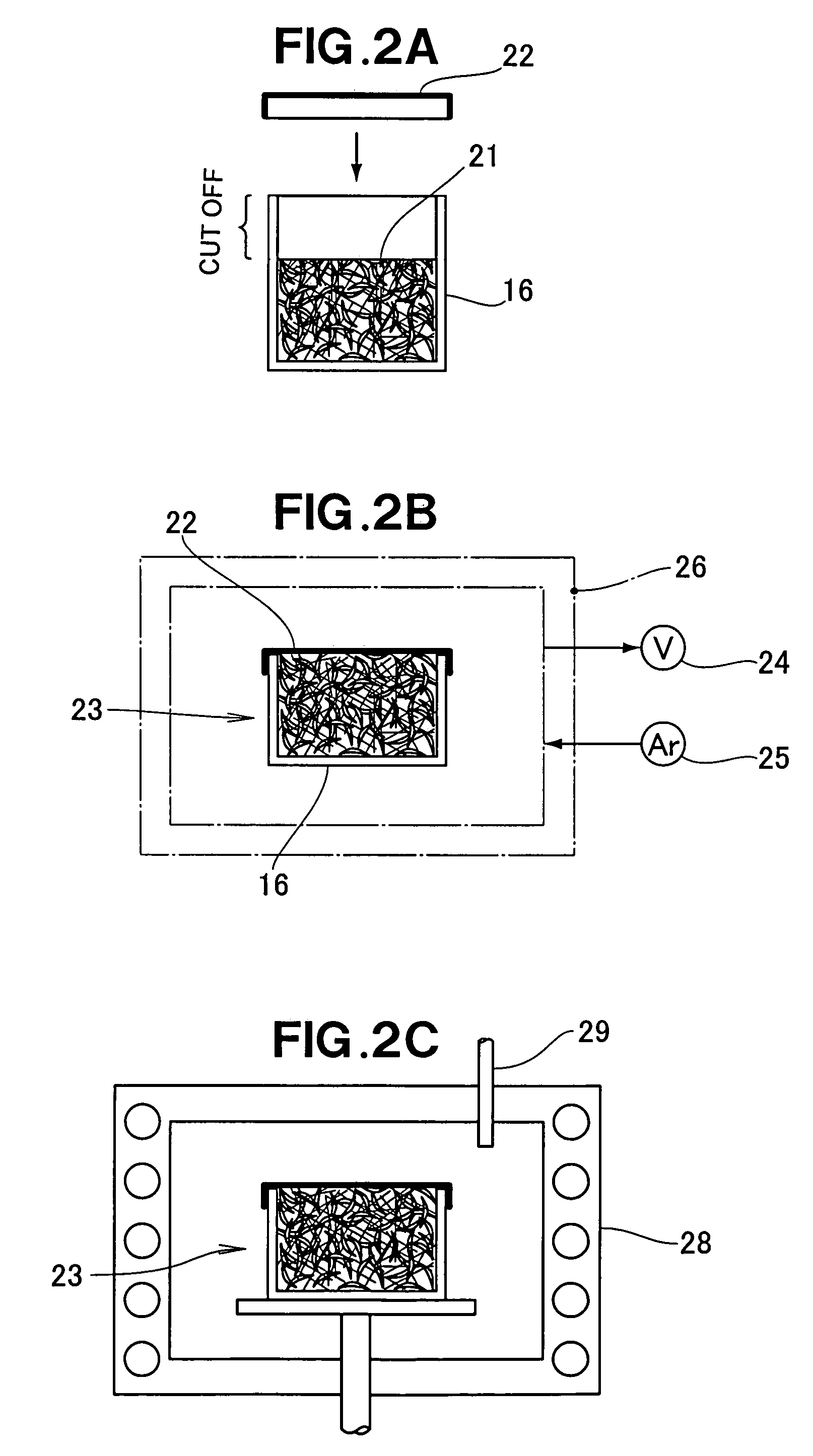Process for manufacturing a nanocarbon-metal composite material
a composite material and nano-carbon technology, applied in the direction of manufacturing tools, foundry patterns, moulding apparatus, etc., can solve the problems of no sophisticated operating skill, such as rotating speed control, in any of the mixing, compact forming, heating, etc., and achieves improved wear resistance, small surface area, and elevated surface hardness
- Summary
- Abstract
- Description
- Claims
- Application Information
AI Technical Summary
Benefits of technology
Problems solved by technology
Method used
Image
Examples
experimental examples
[0034]The present invention will now be described by several experimental examples, though these examples are not intended for limiting the scope of the present invention.
1. Nanocarbon Materials Used in the Experiments
[0035]Nanocarbon fibers (hereinafter CNF) having a diameter of 1.0 to 150 nm (nanometers) and a length of several to 100 μm.
2. Metallic Matrix Materials Used in the Experiments
[0036]Magnesium alloy die casting (JIS H 5303 MDC1D) chips (hereinafter MD1D).
3. Mixing Step
3.1. Mixing Ratio:
[0037]Sample No. 01: 5 vol % CNF / 95 vol % MD1D
[0038]Sample No. 02: 5 vol % CNF / 95 vol % MD1D
[0039]Sample No. 03: 10 vol % CNF / 90 vol % MD1D
[0040]Sample No. 04: 10 vol % CNF / 90 vol % MD1D
[0041]Sample No. 05: 15 vol % CNF / 85 vol % MD1D
[0042]Sample No. 06: 15 vol % CNF / 85 vol % MD1D
4. Covering Step (for Samples Nos. 01 to 06)
[0043]An aluminum can and an aluminum foil were used for covering.
5. Heating Step (for Samples Nos. 01 to 06)
[0044]Heating temperature: 585° C.
[0045]Heating time: 30 min...
PUM
| Property | Measurement | Unit |
|---|---|---|
| melting point | aaaaa | aaaaa |
| length | aaaaa | aaaaa |
| thickness | aaaaa | aaaaa |
Abstract
Description
Claims
Application Information
 Login to View More
Login to View More - R&D
- Intellectual Property
- Life Sciences
- Materials
- Tech Scout
- Unparalleled Data Quality
- Higher Quality Content
- 60% Fewer Hallucinations
Browse by: Latest US Patents, China's latest patents, Technical Efficacy Thesaurus, Application Domain, Technology Topic, Popular Technical Reports.
© 2025 PatSnap. All rights reserved.Legal|Privacy policy|Modern Slavery Act Transparency Statement|Sitemap|About US| Contact US: help@patsnap.com



